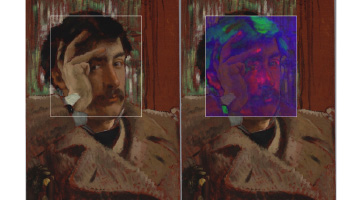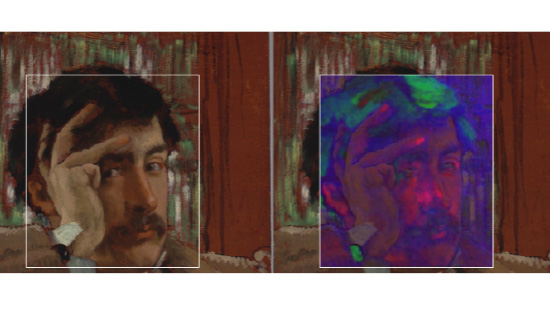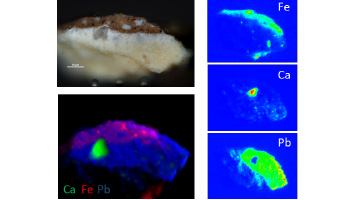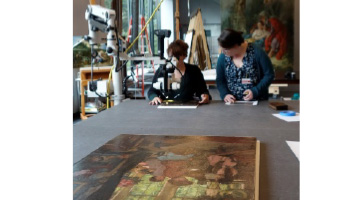
Macroscale analyses
Scanning MA-XRF and hyperspectral imaging in the UV-VIS and NIR domains were undertaken to gain insights into the painting materials used by Tissot and their spatial distribution across the paintings.
Understanding James Tissot’s Painting Materials and Techniques

This project started as a collaborative endeavor between the Fine Arts Museums of San Francisco (USA) and the Center for Scientific Studies in the Arts, soon extended with the collaboration of the Getty (Los Angeles, USA) and the C2RMF (Paris, France), and Musée d’Orsay (France).
Academically trained and having lived in both London and Paris, James Tissot (1836 – 1902) was financially successful during a period of seismic shifts in the art world. The purpose of this study was to map how Tissot’s materials and techniques have been influenced by his academic training and the innovative art movements happening during his lifetime, with a particular focus on his early career. This aimed to fill a gap in the scholarly research and provide audiences with a window into a period of important shifts in artistic techniques based on careful looking and analysis of Tissot’s practice. To date, no major investigation into Tissot’s painting materials and working methods has been published, but relevant comparative information lends some insight, including studies of materials and suppliers available to the Impressionist and Barbizon painters around the same time ; and the practices of artists who were part of Tissot’s circle of friends, such as Edgar Degas and James McNeill Whistler.
The scientific investigation of Tissot paintings was motivated by several interrogations related to possible evolution of the painting techniques and material changes:

Scanning MA-XRF and hyperspectral imaging in the UV-VIS and NIR domains were undertaken to gain insights into the painting materials used by Tissot and their spatial distribution across the paintings.

Micro-analyses (SEM-EDX, µXRF, µ XRD and FTIR) were realized on samples cross-sections in order to understand the paint stratigraphy (related to the artist’s technique) as well as the composition of the paint layer.

This part of the project helps contextualize the scientific results obtained at both the macro and micro scales. This helps understand how Tissot’s materials and technique compare to his contemporaries and how the possible evolution may be related to societal and personal changes.
S. Kleiner, E. Pouyet and L. Hardt Oakley, “Tissot’s Painting Technique”, in “JAMES TISSOT”, Melissa E. Buron, 2019,Ed.: PRESTEL, P. 238-245.
S. Kleiner, Behind the Scenes: revealing Tissot’s paint techniques for the James Tissot: Fashion and Faith symposium (FAMFS San Francisco, 2020) - https://www.youtube.com/watch?v=RXmGa1mbaVM&feature=youtu.be (first talk)